Facilities in our laboratory
In Physical Metallurgy Lab we have different types of machines for different types of uses. these machines are very usefull for Metallurgist and materials scientist. So whenever you are having any query related to the instruments or experiments please discuss with our technical staff/Lab incharge.
-
Optical Microscope
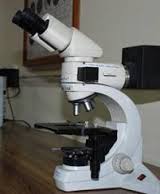
The optical microscope, often referred to as the "light microscope", is a type of microscope which uses visible light and a system of lenses to magnify images of small samples. Optical microscope is the oldest design of microscope and possibly invented in their present compound form in the 17th century. Basic optical microscope can be very simple, although there are many complex designs which aim to improve resolution and sample contrast.
-
XRD diffraction

Department of Materials Science & Engineering houses Bruker D8 Focus with two circle goniometer. The machine is equipped with 0-D detector as well as 1-D detector. 0-D scintillator detector provides high angular resolution, while the 1-D detector provides high quality data at a much faster rate. The diffractometer can be used for powder diffraction, phase analysis, residual stress analysis and also for small angle x-ray scattering. The XRD facility is also equipped with analysis software like Diffrac-Suite, JADE, Match, Pearson Crystal Database and ICDD database.
-
Polishing Machines
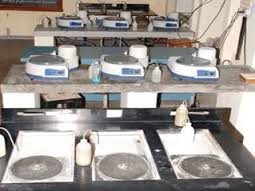
The Polishing Machine (also called the Buffing Machine) is used to polish metals and alloys as well as plastics such as perspex. The two ‘mops’ spin at high speed when the ‘on’ switch is pressed. If the material is carefully pressed against the mop and moved backward and forward it will be polished. The material must be filed to removed scratches and then wet and dry paper or emery cloth is used to further smoothen the surface. Only then, it can be polished on the buffing machine.
-
Micro hardness


Microhardness testing is a method of determining a material’s hardness or resistance to penetration when test samples are very small or thin, or when small regions in a composite sample or plating are to be measured. The microhardness test can measure surface to core hardness of carburized or case-hardened parts (case depths), as well as surface conditions such as grinding burns, carburization or decarburization.
-
Automated Rockwell hardness tester
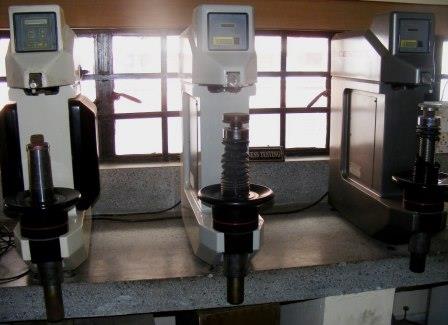

The Rockwell scale is a hardness scale based on indentation hardness of a material. The Rockwell test determines the hardness by measuring the depth of penetration of an indenter under a large load compared to the penetration made by a preload. There are different scales, denoted by a single letter, that use different loads or indenters. The result is a dimensionless number noted as HRA, HRB, HRC, etc., where the last letter is the respective Rockwell scale.
When testing metals, indentation hardness correlates linearly with tensile strength. -
Eletro polishing for EBSD
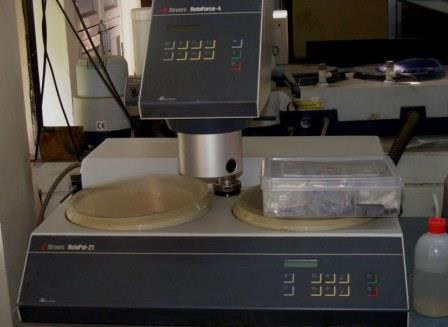

Electropolishing, also known as electrochemical polishing or electrolytic polishing (especially in the metallography field), is an electrochemical process that removes material from a metallic workpiece. It is used to polish, passivate, and deburr metal parts. It is often described as the reverse of electroplating. It may be used in lieu of abrasive fine polishing in metallographic sample preparation.
-
High Temperature furnace with & without atmosphere
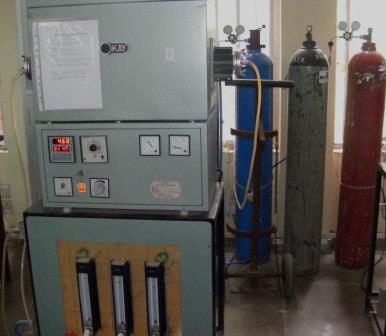

We have three tube furnaces (max temp. 1600 degree celcius) and two muffle furnaces (max. 900 degree celcius ). We also have temperature and atmospheric controlled device.
-
Low temperature furnace
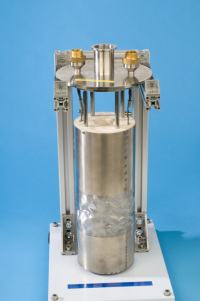

We have two muffle furnaces (max. 900 degree celcius ) we also have temperature control and atmospheric controlled device.
-
Abrasive cutter
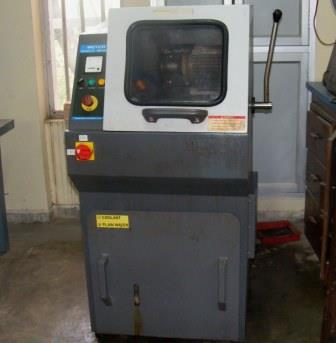

This is used to rough cutting of metals.
-
Hot mounting
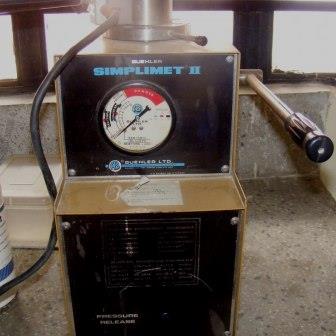

This is used for mounting small and irregular samples for metallographic sample preparation.
-
Low speed cutter
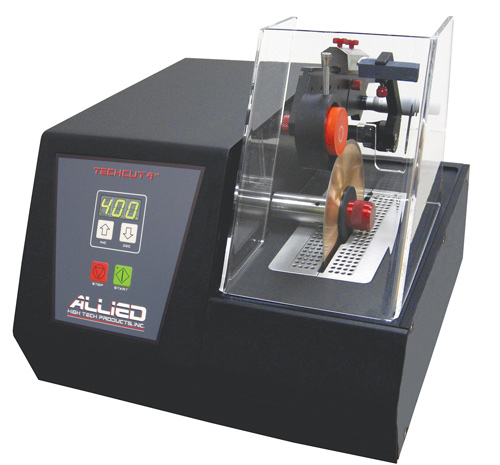

This is used for fine slicing of samples.
-
Image analyser
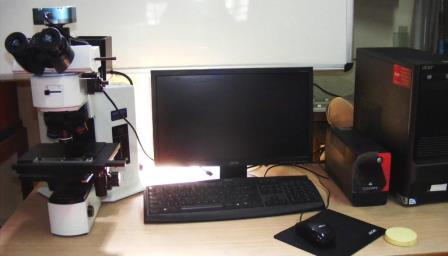

This is sophisticated technique used for the microstructures, grain size , grain boundary area, stereological analysis.
-
DSC/TGA


This is another sophisticated Thermal Analysis apparatus used to determine heat of reaction, oxidation, heat of crystallization, etc. It also has the option to get the thermogravimetric analysis of materials upto 1200 degree celcius coupled with calorimetric information.
